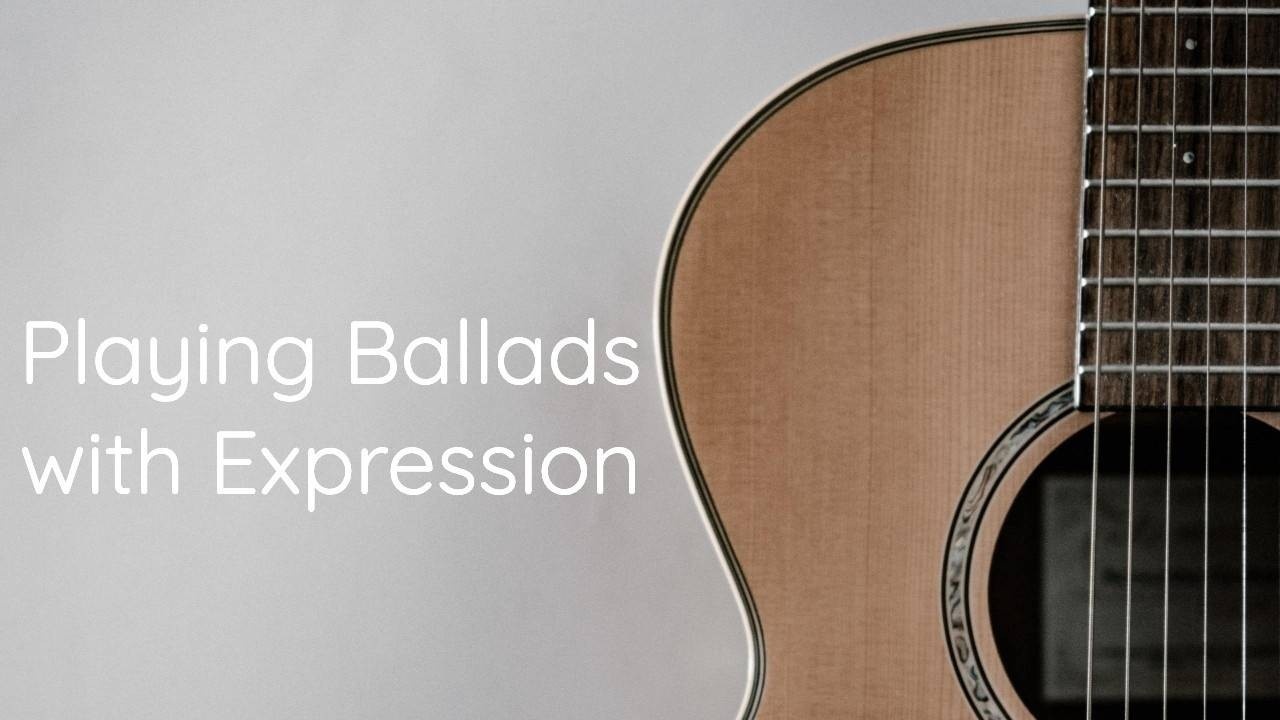
Playing With Expression via Ballads
Oct 05, 2020In the sea of jazz information that's out there, it's easy to forget that what we're all really trying to do is play expressive, emotional music.
A great way to get back into the mindset of playing music, rather than just running scales, is to play ballads.
Songs like Darn That Dream, I Fall In Love Too Easily and Body and Soul are some of the most soulful standards out there.
Playing and improvising on these songs can bring out an expressive quality in your playing that's been suppressed by the cold, hard mathematics of modern jazz 🤐 💻
In this lesson we'll give you a step-by-step method for practicing expressive playing on ballads, including:
- Learn the tune inside & out
- Play the melody "straight"
- Embellish the melody
- Improvise around the melody
And more! We're going to use the tune Body and Soul as our example.
1. Learn The Tune Inside & Out (3:03)
The first step, as with any jazz tune, is to listen extensively to a few different versions. I recommend checking out our lesson on Body and Soul to get a list of different recordings.
To start, pick a version with a vocalist, so you can internalize the lyrics. On ballads especially, the lyrics are super important - they're the best way to really feel the romance of the tune.
Here's a great version by Ella Fitzgerald 🎵
Once you've got the lyrics, melody and form internalized, you'll be able to appreciate the instrumental versions so much more.
My personal favourite instrumental recording of this tune is Dexter Gordon's version from Ballads!
2. Play The Melody "Straight" (4:44)
The next step is to play the melody straight - as in, no extra notes, no improvising, no BS 😉. While this may seem simple, in reality it's pretty tough to make this sound compelling.

Try this a cappella, with no backing track! It can be pretty eye-opening to hear your tone this exposed, and as a result, your sound will improve.
It's important that you spend a lot of time with this step before moving on. After all, how can you improvise on a melody that you don't really know?
3. Embellish the Melody (7:35)
Now that you've internalized the melody and the lyrics, it's time to make things more interesting! We're going to try and add little embellishments around the melody.
This is something that you've heard all your favourite jazz musicians do. It's very rare that someone will just play the melody straight like we were doing in the last step.
There's no rules for this - you want to find things that you enjoy the sound of! Think of it as your own personal version of the melody.
Here are some examples on the A section of Body and Soul to get you started:




4. Improvise Around The Melody (10:09)
Here's the step many of you were probably waiting for - soloing! This is what all of the previous steps have been leading up to.
The catch here, though, is that you can't go into your blues licks, or just start running scales and arpeggios.
Instead, the exercise is to improvise while always keeping the melody in mind.
There is no better example of this than Coleman Hawkins' famous version of Body and Soul:
Just think - this was a HIT in 1939! And he pretty much only played the very first phrase of the melody!
One of the things that Hawkins is doing here is using key notes of the melody as target notes. Here is a little cheat sheet so you can try this for yourself:


Ultimately, the goal of this is to play things that still express the melody of the song, even if you're not playing the melody verbatim.
Ask yourself: would people know what song I'm playing just from hearing my solo?
Bonus Section
5. Sing What You Play (16:54)
For those of you that have gotten this far, here's a challenge: improvise, and sing what you play. (Click to hear me try this!)
This will ensure that you're really hearing what you're playing! You can do this on any tune, but ballads are great for this because you have more time on each chord change.
Don't be shy if you're not a singer - it doesn't need to sound good. Just listen to any Keith Jarrett record and you'll quickly understand. 😅
6. Play a Chord Melody (21:07)
You can apply all the previous steps to chord melody playing as well! One option is to play an arrangement - here's one that's ready to go:

If you're feeling really adventurous, what you can do is take the target note exercise from earlier, but turn it into target chords.
Improvise, but try to land on these chord voicings:


7. Play With A Backing Track (21:33)
Final step: take everything we've done so far, and use it over a backing track of just bass and drums.
If you can improvise and keep the form while never losing track of the original melody, then you're well on your way to playing expressive lines!
Further listening
Here are some more amazing recordings of expressive ballad playing:
***Notes from the editor*** This post was updated 10/06/2020 (Imagery, syntax and layout updated)









